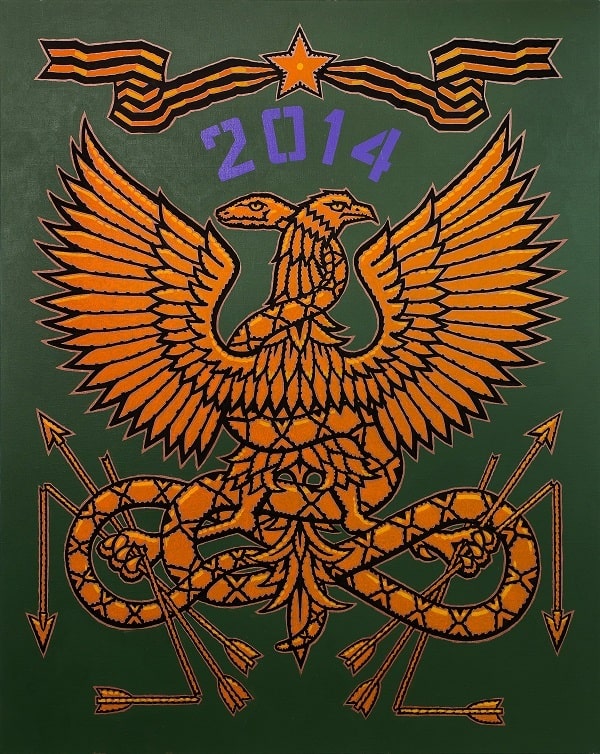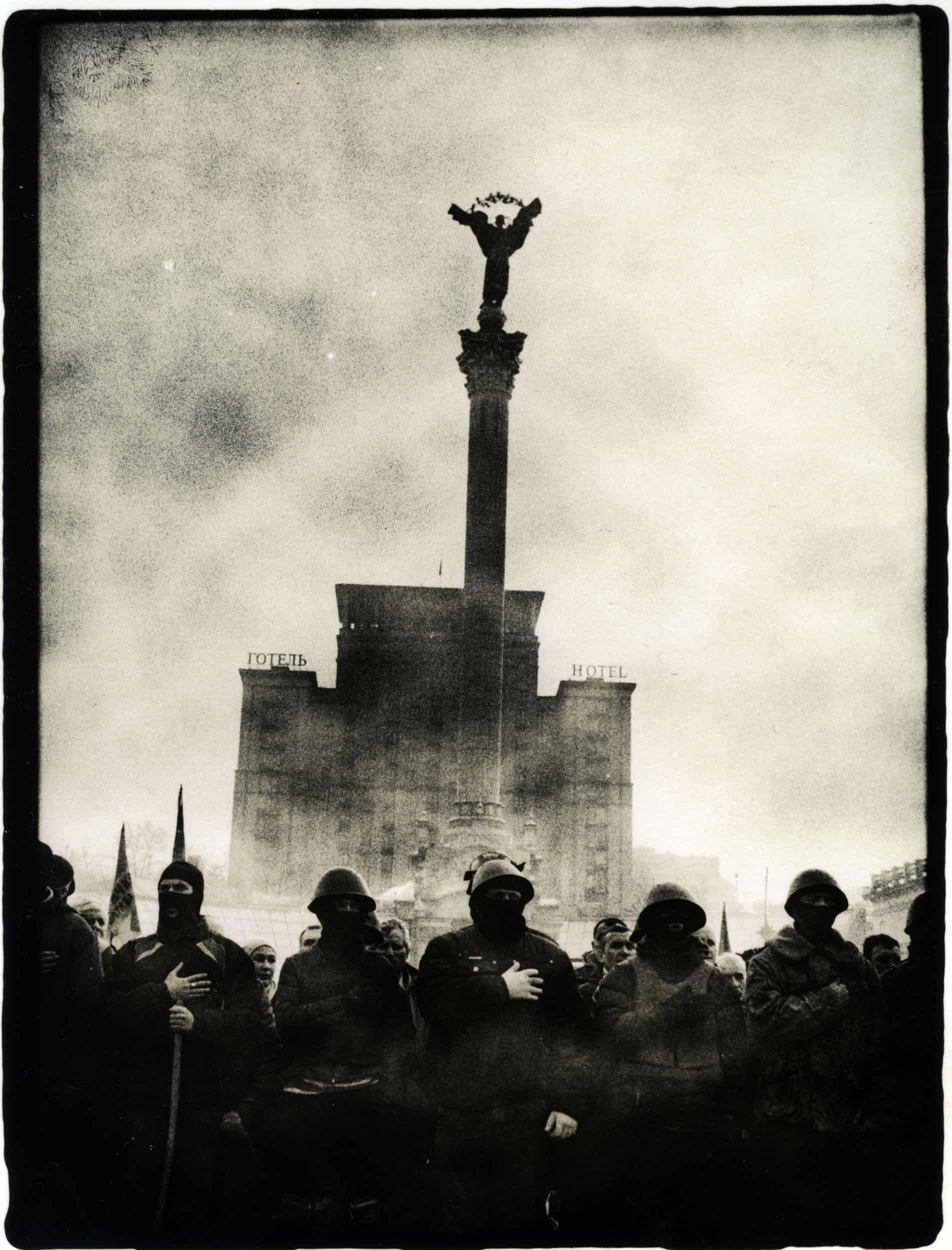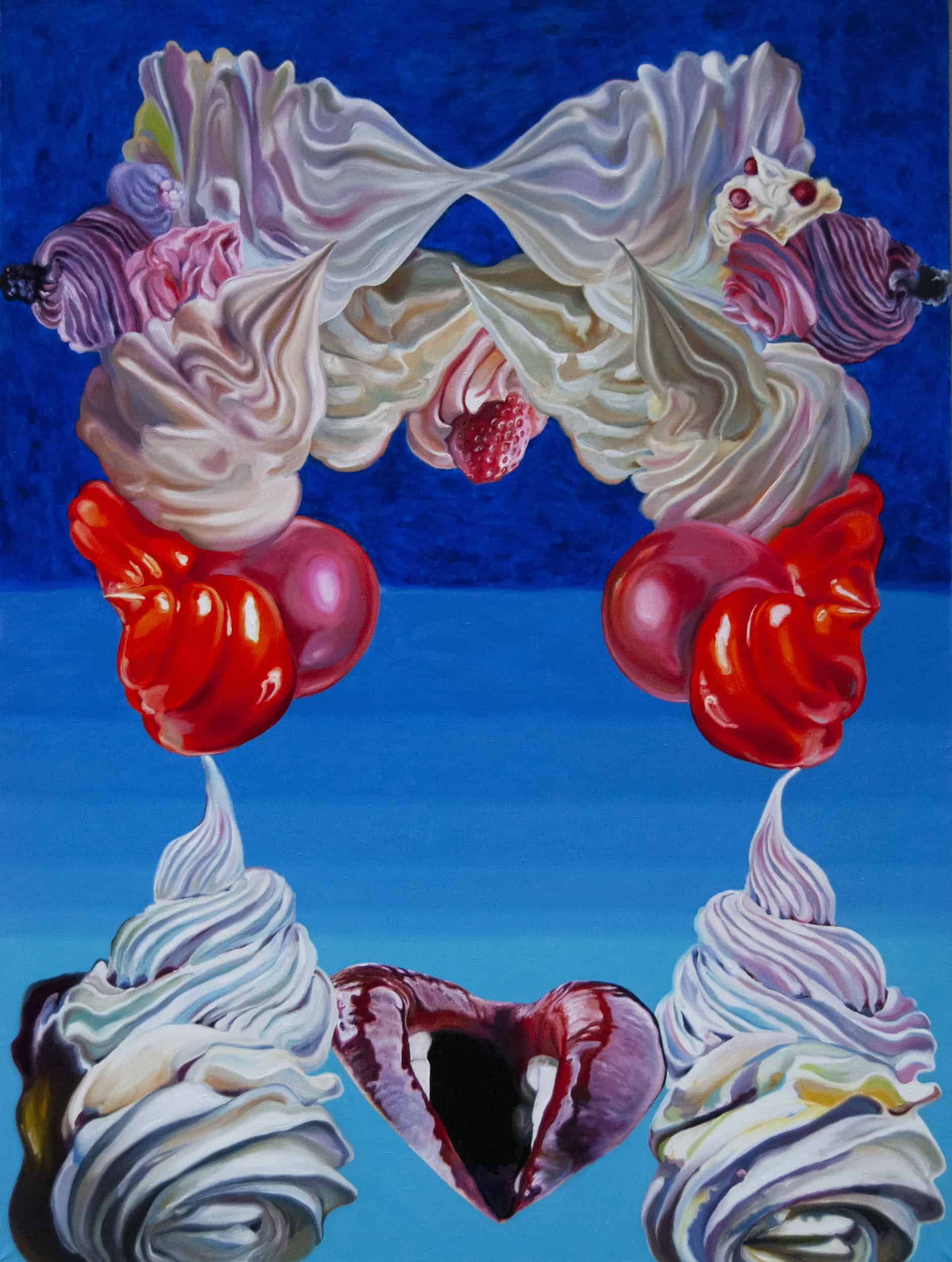From 3 April till 7 June 2020 the CCA in Toruń, in collaboration with YermilovCentre in Kharkiv, is holding Artificial pain. Exhibition of Ukrainian contemporary art. I got the opportunity to talk with the co-curator of the exhibition and the director of YermilovCentre, Nataliia Ivanova about how the influence of traumatic experience, the cyclical nature of events and the hope for a change in the future are reflected in the presented works.
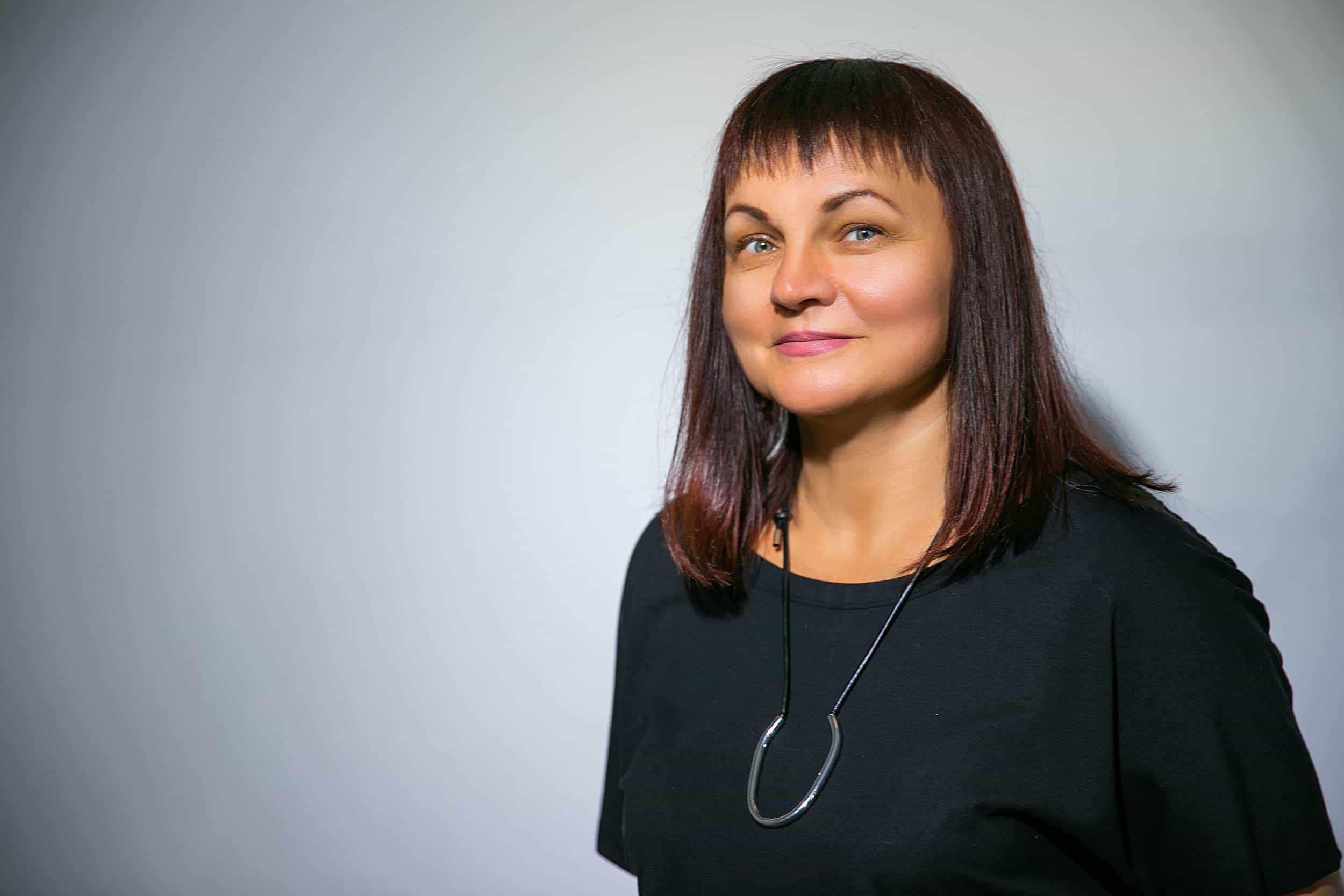
Nataliia Ivanova, courtesy of the curator
Vera Zborovska: The title of the exhibition is your idea. Could you tell why exactly is it “artificial pain”?
Nataliia Ivanova: Artificial pain is, in fact, a fake. But we called it “Artificial pain” because it is a certain wordplay. “Sztuka” in Polish means “art”, and in Ukrainian it means “artificial”, so something what was made by human and did not arise naturally. Therefore, we decided to use such a name for what the artists created by responding to the painful topics – political, social, economic and environmental – that exist in the Ukrainian realities.
VZ: If this exhibition is dedicated to the history of Ukrainian traumatic experiences, then the person from Ukraine who has experienced these events can understand it the best way. So, do not you think that the Polish audience will not feel it so deeply?
NI: I think that the task was to show what we have already experienced in Ukraine and what the reaction of the artists to those events is. And therefore, we wanted to show it not so much in Ukraine, but abroad. It was important for us that it was known not only in our country. We are glad to have received an offer from our Polish partners and for this exhibition to be held in Poland, as it is our closest neighbour, partner and friend.
Exhibition “Artificial pain” begins with Mykola Matsenko and Oleg Tistol’s (known as the artist collective NATSPROM) work, called “September 17, 1939”. This date would be painful for any Pole, as it is the date of invasion of the Soviet troops to Poland, a result of the Molotov-Ribbentrop Pact. Matsenko Tistol’s work is presented at the exhibition not by chance: it shows an important moment in our common history and we would like no one to forget this date and for the similar “September 17” never to be repeated. But unfortunately, what happened in 1939 is now happening in the east of Ukraine.
Mykola Matsenko, „Stripe”, 2014
Serhiy Lebedynskyy, „Maidan”, 2014
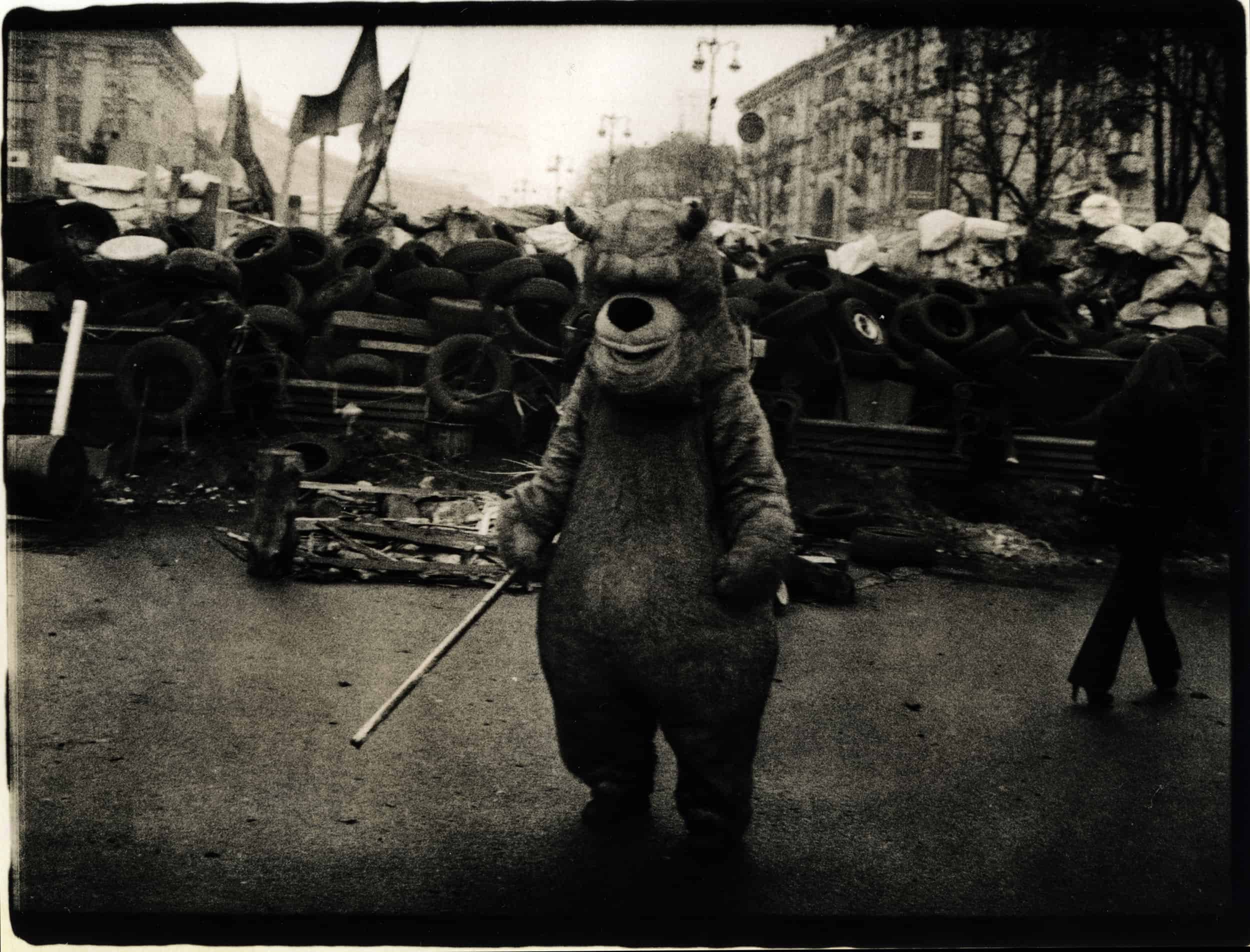
Serhiy Lebedynskyy, „Maidan”, 2014
VZ: If the exhibition was held in a country that does not have so much in common, as you mentioned Ukraine has with Poland, for example, in the United States, would any changes be made to the technique of the transmission of information?
NI: We would transform the pitch. When you receive offer to hold an exhibition of Ukrainian contemporary art in a certain country, you need to consider how much people are aware of your country there. I am sure that there are countries in which Ukraine is still perceived as part of Russia, or there are countries that respond only to the word “Chernobyl”. I think that before showing an exhibition in any country, of course, you need to take into account how much the audience in this country is ready to perceive information about Ukraine, about its people and events.
VZ: So, basing on the mentality of the country, you need to select the appropriate emphasis.
NI: Yes, but it seems to me that it depends not only on the country, but also on the city and other factors.
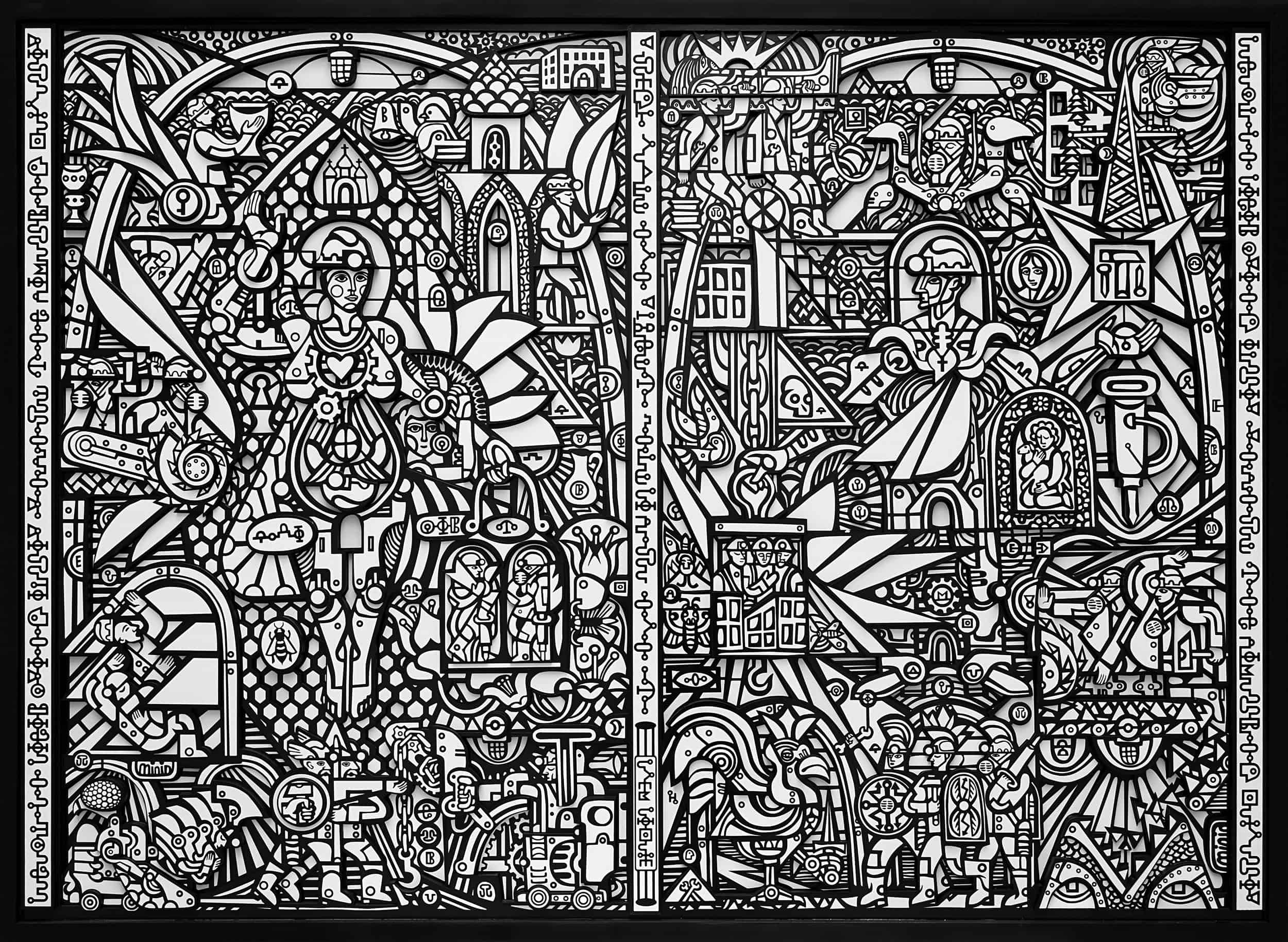
Roman Minin, „Plan of escape from Donetsk region”, 2015
VZ: Who do you think is the main actor transferring information to the viewer: an artist or a curator?
NI: I can say that we cannot be without the artists as well as the artists cannot be without us. The curatorial task is to maximize the display of the selected topic. If we chose pain points, such as the military conflict in the East, the annexation of Crimea, the search for national identity and the influence of the Soviet past on our present life, then our task was to select artists who offer to reveal this topic as much as possible. And if artists do not respond to any events, then the curators will only write down the concepts, ending up with what seems to be just an epistolary novel.
VZ: Then it can be said that the collaboration of the curator and the artist is reflected in McLuhan’s theory “the medium is the message”, on the basis of which the whole is created?
NI: Absolutely. The exhibition features 26 works by 23 artists and of course there is a huge communication between the curator and the artist. But there is also the communication between the curator and those who make the exposure. Also, the artist’s works communicate with each other in the exhibition space. And, of course, there is still communication with the viewer.
VZ: I have seen several of the works presented at the exhibition, and noticed that the main topic is post-trauma.
NI: Yes, and it is important not to forget about this trauma. The idea of the exhibition appeared 2 years ago when it seemed that we were used to living with everything that was happening. We are no longer so sharply and emotionally reacting to the fact that a military conflict has been going on in our country for 6 years. And thanks to the existence of the artists, we can return to this situation. They show how significant this is and how many issues have not yet been resolved.
The last part of the exposition is a hall of reflection on the future. After all, we should think with what we will come to this future. This is an absolutely white room, in which there is Mykyta Shalennyi’s work “VR Bridge”, which demonstrates that he wants to live in a country that he has not yet reached across this bridge.
Bella Logachova, „Art NUO”, 2014–2020, „Paris 2019”
Bella Logachova, „Art NUO”, 2014–2020, „Olympiada Sochi 2014”
VZ: Is the main message of the exhibition a hope that this array of traumatic events will be followed by a change for the better?
NI: Everyone hopes that tomorrow will be better. But we wanted to highlight the fact that if we do not focus on the present, nothing will change. And it is just one of the missions of contemporary art to emphasize problems which people do not usually notice and provide them with a certain visual embodiment.
The participants of Artificial pain. Exhibition of Ukrainian contemporary art are: Gera Artemova, Taras Kamennoy, Vitalii Kokhan, Vladyslav Krasnoshchek, Sergiy Lebedynskyy, Bella Logachova, Tetiana Malynovska, Mykola Matsenko, Serhiy Melnichenko, Roman Minin, Roman Mykhailov, NATSPROM (Mykola Matsenko and Oleg Tistol), Mykola Nosok, Yuliia Polunina-But, Roman Pyatkovka, Andrii Rachynskyi, Danyyl Revkovskyi, Oksana Solop, Victor Sydorenko, Vasyl Tsagolov, Artem Volokitin, Lana Yankovskaya, Kostiantyn Zorkin, Mykyta Shalennyi.
Tetiana Malynovska, „Triumph”, 2017
Tetiana Malynovska, „Triumph”, 2017








